In 1926 a fund for the building of pithead baths was introduced through the Miners’ Welfare Fund.
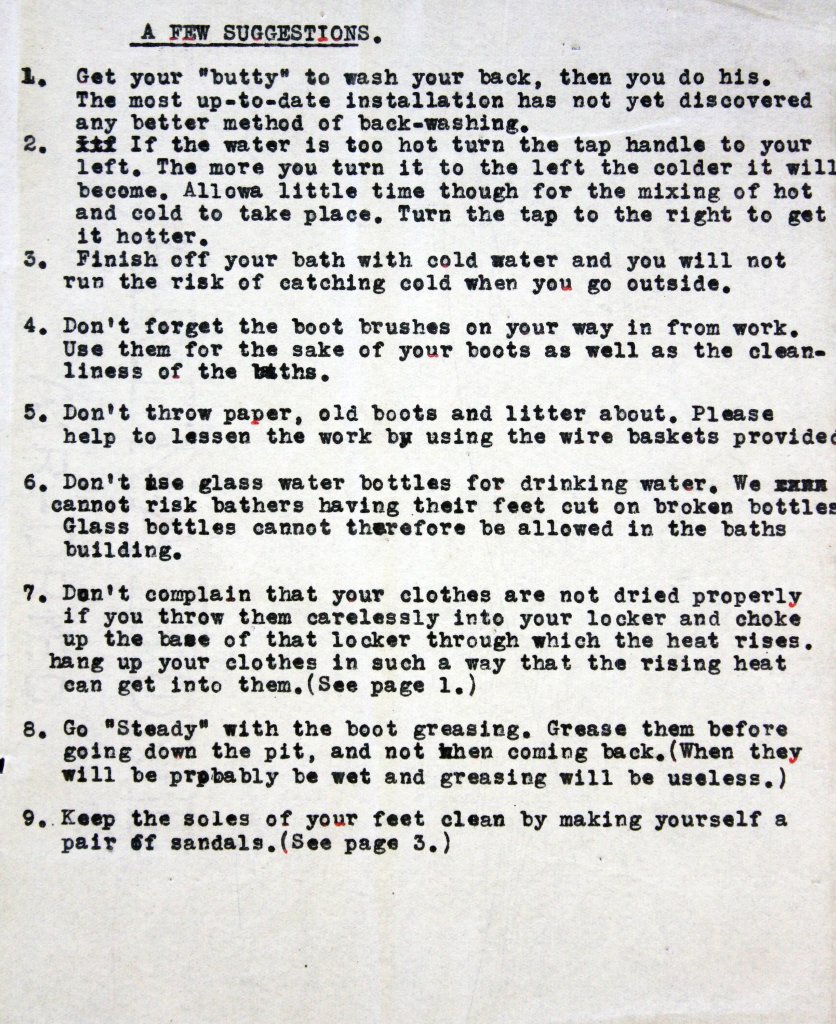 Instructions for use of pithead baths, c.1930 (D1100/1/2/6)
Instructions for use of pithead baths, c.1930 (D1100/1/2/6)The baths would allow miners to leave work clean and improve the lives of their families.
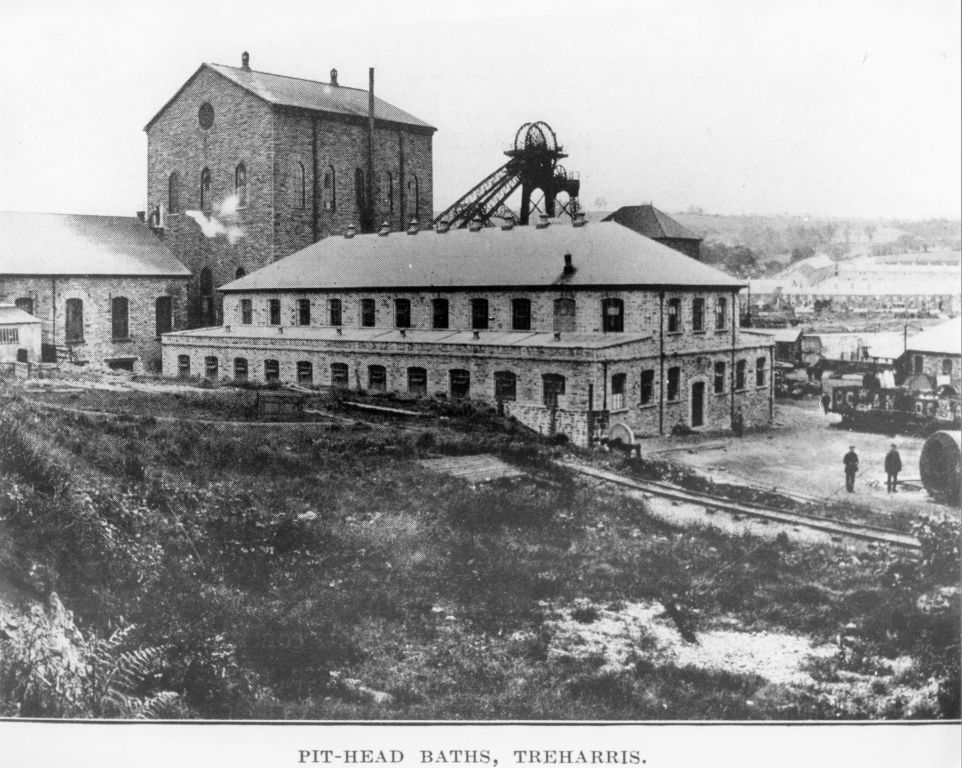 The first pithead baths in Wales, Treharris, c.1921 (DNCB/14/3/23/2)
The first pithead baths in Wales, Treharris, c.1921 (DNCB/14/3/23/2)Before pithead baths, miners travelled home from work filthy with coal dust. Often wet with sweat and mine water, they risked contracting pneumonia, bronchitis or rheumatism.
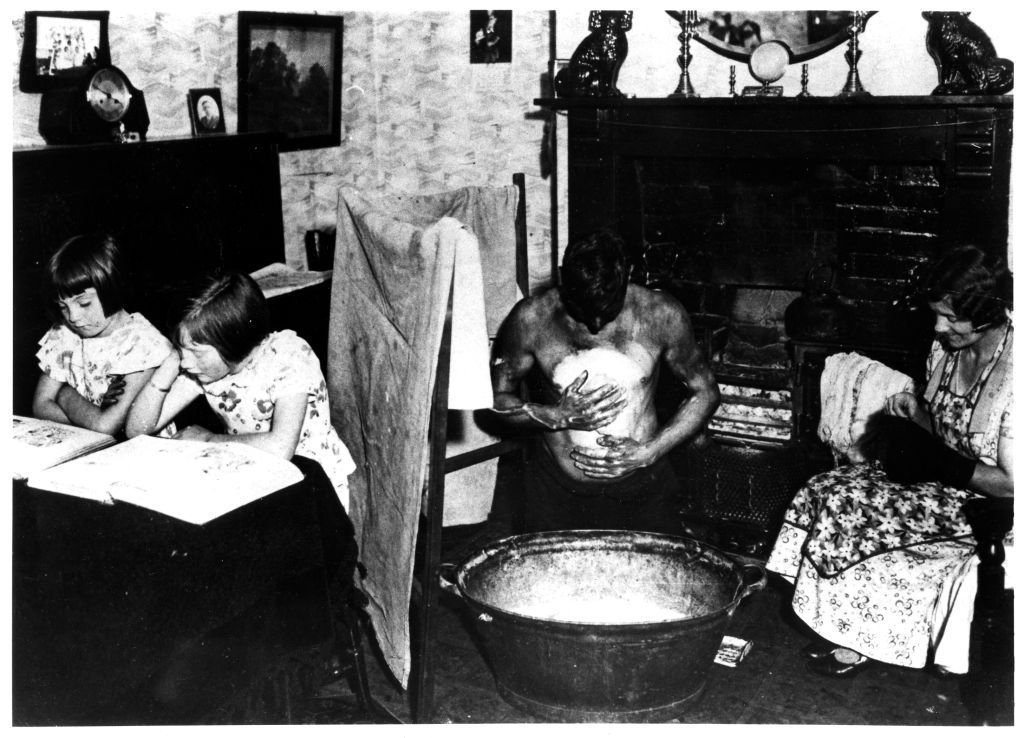 Miner bathing at home, c.1930 (DNCB/14/3/41/3)
Miner bathing at home, c.1930 (DNCB/14/3/41/3)Women would work hard cleaning the coal dust from the home and preparing baths for miners. Hundreds of children lost their lives due to falling into boiling hot bath water.
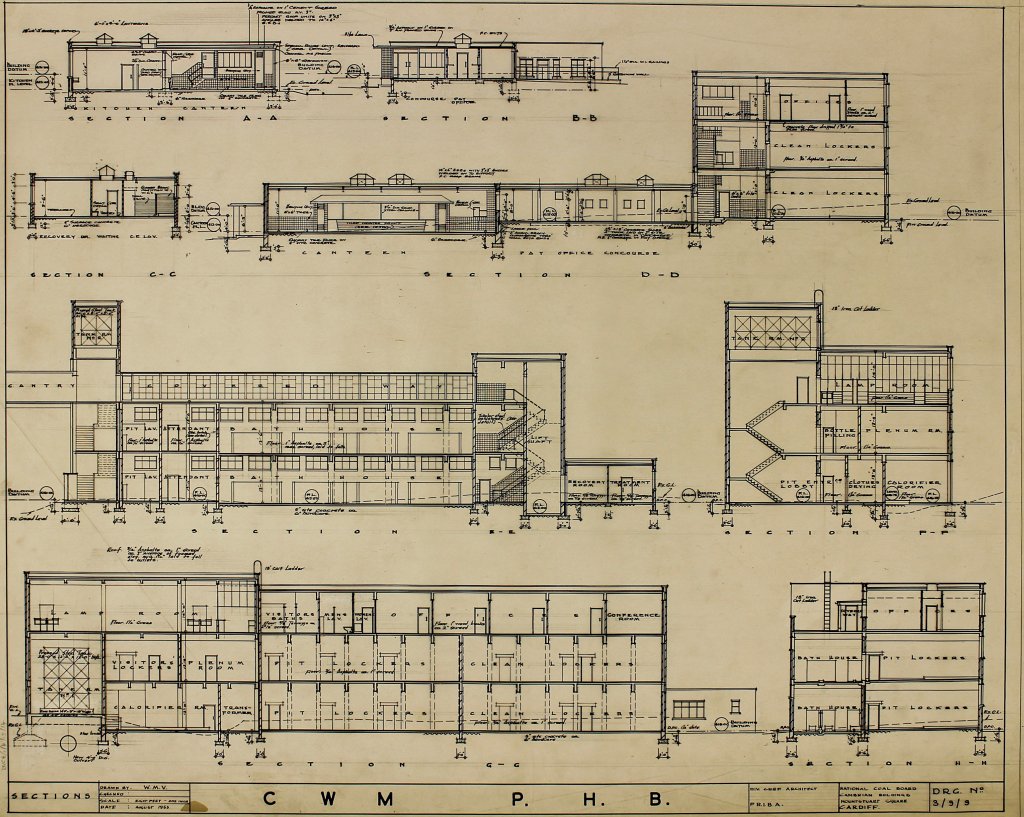 Cwm Colliery, Pithead Baths plan, Aug 1953 (DNCB/1/4/13/14)
Cwm Colliery, Pithead Baths plan, Aug 1953 (DNCB/1/4/13/14)Pithead baths plans held at Glamorgan Archives demonstrate how the lives of miners’ and their families were improved, showing facilities such as showers, canteens and first aid centres.
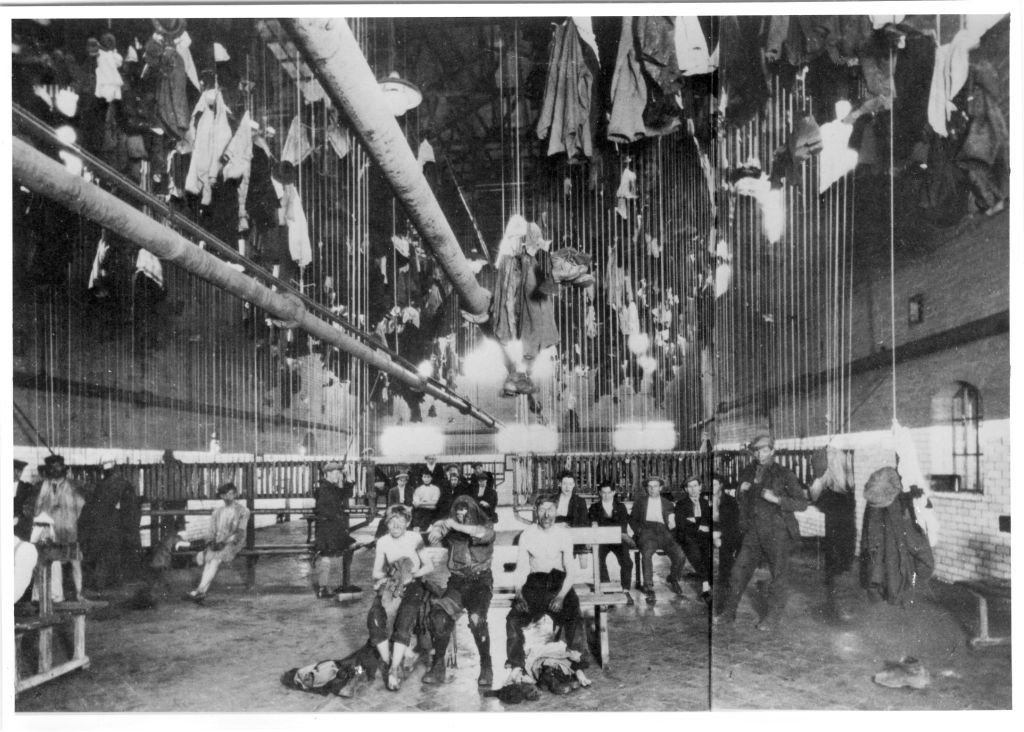 Pithead Baths, unknown colliery, [c.1920] (DNCB/14/1/21)
Pithead Baths, unknown colliery, [c.1920] (DNCB/14/1/21)

